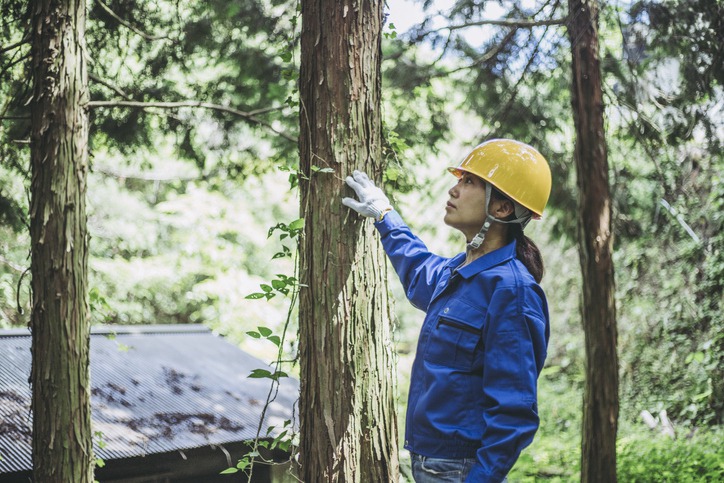Ever strolled through a park or your neighborhood and admired the beauty of well-kept trees? They’re more than just pretty scenery. Trees need care, and when we neglect them, a host of issues can sprout up. Let’s talk about the risks and why keeping up with tree maintenance is vital for our communities, environment, and safety.
Why Do Trees Require Consistent Care?
Trees play a vital role in our ecosystem by cleaning the air, providing shade, supporting wildlife, and enhancing property values. Just like any living organism, they need regular care to thrive. Neglecting their maintenance can lead to safety hazards, such as falling branches or toppling trees, which can damage property and pose risks to people.
Additionally, unmaintained trees may suffer from diseases that weaken their structure and reduce their ability to filter air pollutants, ultimately impacting environmental health. Consistent care ensures trees remain healthy and continue to provide their many benefits while also preventing costly problems down the line.
Potential Hazards of Overgrown Trees
When trees grow unchecked, they can become hazardous. Here are some risks associated with neglecting tree maintenance:
-
Fallen Branches: Dead or weak branches can unexpectedly fall, particularly during storms. This can lead to property damage or injuries, making regular pruning essential for safety.
-
Root Damage: Overgrown roots may damage driveways, sidewalks, and underground pipes. This can result in costly repairs, highlighting the need for regular root management.
-
Toppling Trees: Unhealthy or unstable trees are at risk of falling. This poses significant dangers to people and structures, emphasizing the importance of routine tree health assessments.
Environmental Impact of Unmaintained Trees
Trees play a crucial role in our ecosystems. Neglecting them can disturb local ecology and contribute to wider environmental issues:
-
Loss of Habitat: Dying trees can result in the loss of crucial habitats for birds and other wildlife. These creatures rely on healthy trees for shelter and food, and their decline can disrupt local ecosystems.
-
Reduced Air Quality: Healthy trees are vital for filtering air pollutants and improving the air we breathe. When trees become sick, they lose this ability, negatively impacting air quality and overall environmental health.
-
Negative Contribution to Climate Change: Trees play a key role in capturing carbon dioxide, helping to balance greenhouse gas levels. Neglected trees are more prone to disease and removal, disrupting this balance and contributing to climate change.
How Neglect Affects Property Value
Trees are valuable real estate assets. They increase curb appeal and property value. Here’s how neglect can impact this:
-
Unattractive Appearance: Overgrown or unhealthy trees can give a property an untidy look, affecting its overall appeal. Regular maintenance keeps trees looking neat and enhances the beauty of the landscape.
-
Potential Liability: Dangerous trees pose safety risks, which can deter potential buyers and affect property value. Addressing tree health and stability is essential to minimize liability concerns.
-
Increased Maintenance Costs: Neglecting tree care can result in severe issues that are costly to fix later. Regular upkeep helps prevent these problems, saving time and money in the long run.
Community Safety Concerns
Neglecting tree maintenance isn’t only a personal problem—it affects the whole community. Overgrown trees can:
-
Obstruct Traffic Signs: When trees grow unchecked, their branches can obscure traffic signs, leading to potential hazards for drivers and pedestrians. This obstruction can cause misunderstandings on the road, increasing the risk of accidents.
-
Interfere with Power Lines: Overgrown branches that encroach on power lines can lead to power outages and pose serious fire risks. Regular trimming helps prevent these dangerous situations and ensures the safety and reliability of the power supply.
What You Can Do About It
Now that we know the risks, what can we do to prevent these issues? Regular tree maintenance and hiring professionals are key steps. Here’s a simple plan:
-
Regular Inspections: Check your trees for dead branches, signs of disease, and root issues.
-
Pruning and Trimming: Keep branches neat to prevent hazards.
-
Hire Professionals: Look for qualified arborists for expert care.
To find qualified professionals, you can easily connect with trusted experts by choosing to view arborist services on Google Maps. It’s a convenient way to ensure you receive expert care tailored to your area.
Enhancing Tree Health with Preventative Care
It’s always better to be proactive when it comes to tree health. Incorporating preventative tree care strategies such as regular watering, fertilization, and pest control can effectively ward off diseases and maintain robust trees. These preventative measures help ensure that trees remain strong and healthy, minimizing potential safety hazards like falling branches.
Additionally, healthy trees are better equipped to provide their environmental benefits, such as air purification and wildlife support. If you’re unsure where to start, you might want to search online for “best arborists near Marne, MI” to find local experts who can help you implement these strategies. By investing in routine care, you can avoid the hassle of addressing more severe problems down the line, ultimately preserving the beauty and functionality of your landscape.
Final Thoughts
Maintaining trees isn’t just about keeping your garden pretty. It’s a vital part of property care, community safety, and environmental health. Trees are a precious resource, and taking the time to care for them ensures they continue to benefit us in countless ways. Next time you see a towering oak or a spread of flowering branches, remember the importance of keeping our trees healthy and well-maintained.





